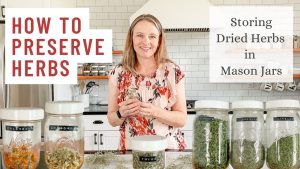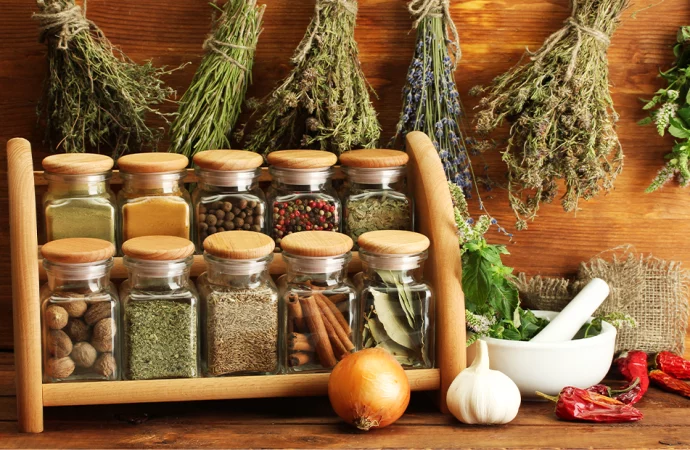Introduction Fresh herbs can completely transform the flavor of a dish. They bring brightness, aroma, and a touch of freshness that can turn an average recipe into something special. But if you live in an area with cold winters or limited growing seasons, finding fresh herbs year-round can be a challenge. Thankfully, preserving herbs allows
Introduction
Fresh herbs can completely transform the flavor of a dish. They bring brightness, aroma, and a touch of freshness that can turn an average recipe into something special. But if you live in an area with cold winters or limited growing seasons, finding fresh herbs year-round can be a challenge.
Thankfully, preserving herbs allows you to capture their flavor and enjoy them no matter the season. There are several methods to do this, but three stand out for their effectiveness and simplicity—drying, freezing, and storing. These techniques are easy to learn and don’t require expensive tools, making them perfect for home cooks.
Why Preserve Herbs?
Herb preservation ensures that you always have your favorite flavors on hand. Whether you grow herbs in your garden, buy them fresh from the market, or receive them as a gift, preserving them means less waste and more convenience.
Other benefits include:
- Saving money by reducing the need to buy fresh herbs out of season.
- Keeping herbs available for quick cooking without last-minute store trips.
- Retaining most of the aroma and taste for months.
- Reducing food waste by using every bit of the herbs you purchase or grow.
Preserve Herbs with Drying, Freezing, and Storing

Image by: Yandex.com
Method 1: Drying Herbs
Drying is one of the oldest and most common ways to preserve herbs. It removes moisture, which prevents mold and bacteria from growing.
How to Air Dry Herbs:
- Gather fresh herbs and gently wash them to remove dirt.
- Pat them dry with a clean towel.
- Tie the stems together with string to form small bundles.
- Hang them upside down in a warm, dry place with good air circulation.
- Leave them for one to two weeks until completely dry.
How to Oven Dry Herbs:
- Spread clean, dry herbs on a baking sheet in a single layer.
- Place in the oven at the lowest temperature setting, keeping the door slightly open.
- Check every 30 minutes until they are dry and brittle.
Storage Tip: Keep dried herbs in airtight containers away from light and heat.
Method 2: Freezing Herbs
Freezing is a great option if you want to keep herbs’ fresh flavor and bright green color. This method locks in their aroma and is especially good for herbs like basil, parsley, and dill.
How to Freeze Herbs in Ice Cubes:
- Wash and chop the herbs.
- Place small portions in an ice cube tray.
- Fill the tray with water or olive oil to cover the herbs.
- Freeze until solid, then transfer the cubes to a freezer bag.
How to Freeze Whole Herbs:
- Wash and dry herbs completely.
- Spread them on a baking sheet in a single layer.
- Freeze for a few hours, then transfer to a freezer-safe bag.
Usage Tip: Frozen herb cubes are perfect for adding directly to soups, stews, and sauces.
Method 3: Storing Herbs in Oil or Salt
Some herbs can be preserved by storing them in oil or salt, which helps keep their flavor while adding a unique twist to your cooking.
Storing in Oil:
- Wash and dry herbs completely.
- Chop them finely and place them in a clean glass jar.
- Cover with olive oil, making sure no herb pieces are exposed.
- Seal the jar and store in the refrigerator for up to three weeks.
Storing in Salt:
- Layer fresh, dry herbs with coarse salt in a glass jar.
- Continue until the jar is full.
- Seal and store in a cool, dry place.
- Use the herb-infused salt in cooking for extra flavor.
Best Herbs for Each Preservation Method
While most herbs can be dried, frozen, or stored in oil/salt, some methods work better for certain types:
| Preservation Method | Best Herbs |
|---|---|
| Drying | Oregano, thyme, rosemary, sage |
| Freezing | Basil, parsley, cilantro, dill |
| Oil/Salt Storage | Rosemary, thyme, basil, oregano |
Tips for Successful Herb Preservation
- Always start with fresh, high-quality herbs.
- Wash gently to remove dirt but avoid soaking to prevent loss of flavor.
- Ensure herbs are completely dry before storing to prevent mold.
- Label and date all containers so you know when they were preserved.
- Store in small batches to make it easier to use only what you need.
Common Mistakes to Avoid
- Skipping the drying step before freezing: Excess moisture can cause freezer burn.
- Storing herbs near heat or sunlight: This can cause them to lose flavor quickly.
- Overcrowding during drying: Herbs need air circulation to dry evenly.
- Using wet utensils when handling stored herbs: Moisture can cause spoilage.
Conclusion
Herbs add life to any meal, but fresh ones are not always available year-round. By learning how to dry, freeze, and store them properly, you can enjoy their flavors whenever you like. Drying works well for hardy herbs, freezing keeps delicate herbs fresh, and storing in oil or salt adds convenience and a burst of flavor.
Preserving herbs is simple, cost-effective, and ensures that you always have a taste of freshness on hand. With a little effort, your kitchen can be stocked with aromatic herbs ready to enhance any dish, no matter the season.























Leave a Comment
Your email address will not be published. Required fields are marked with *